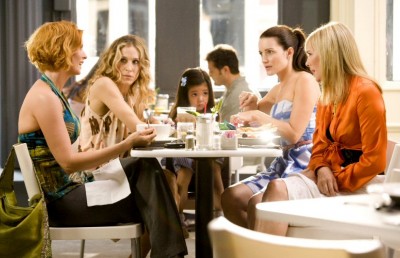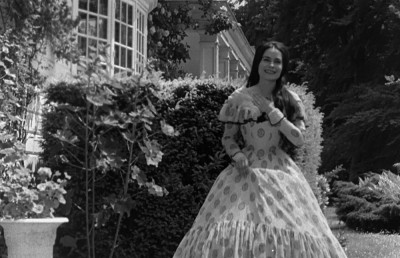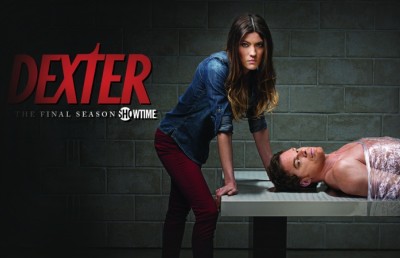TV Vampires: From Barnabas Collins to Bill Compton
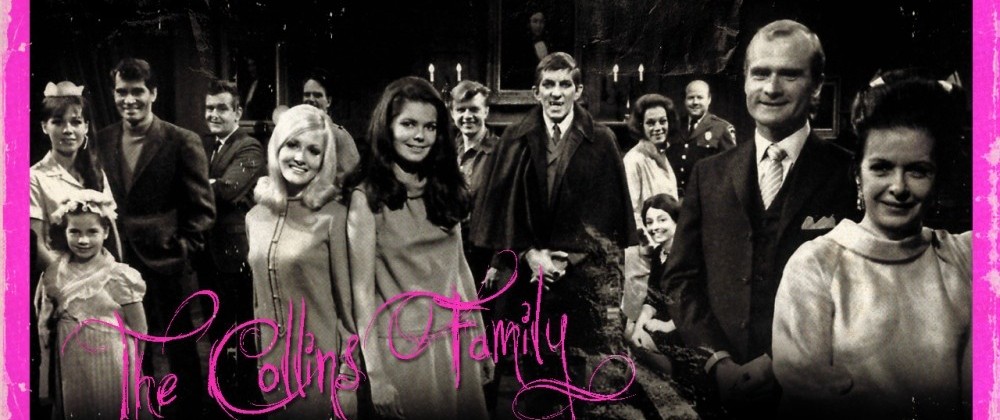
A boy, Mark Petrie, wakes up in the middle of the night to find the figure of his best friend Danny Glick, recently and mysteriously deceased, emerging from glowing white mist and floating outside his bedroom window. With pale skin, hollow eyes, and protruding fangs, Danny gently scratches at the glass, begging to be invited in: ‘Open the window – open the window Mark – please — let me in — it’s ok Mark, I’m your friend’.
This is a pivotal sequence from Tobe Hooper’s 1979 television adaptation of Stephen King’s vampire novel Salem’s Lot (CBS), as it encapsulates those Gothic elements that make the vampire –one of the most pervasive Gothic monsters to haunt popular culture– both frightening and difficult to resist. First vampires appear as our friends, promising intimacy, love and acceptance, and occasionally the return of a departed loved one. Instead they bring pain, death and damnation. Secondly, Danny Glick’s scratches at the window – the most memorable and disturbing element in the scene– highlight the importance of thresholds to the vampire, creatures that must be invited into our homes. One of the most unsettling features of the vampire is that their victims are complicit in their dark fate, having chosen to let them in. Thresholds are a key component of the Gothic, a genre that haunts, like the vampire, the liminal space between life and death. The sound of Danny Glick’s fingernails on the glass is an uncanny reminder of this liminality, calling attention to the thin barrier that separates us and them, life and death.
This sequence is made all the more frightening by the fact that it was broadcast on television, with the TV mirroring the glass barrier of the window. Television is another threshold through which we choose to invite the vampire into our homes on a regular basis. It is through television that the vampire has gained a foothold in our popular consciousness and it does so from childhood. Long before seeing a film or stage adaptation of Dracula or reading Bram Stoker’s 1897 novel, children come to recognise the Count and the associated vampiric and gothic iconography through television series such as Count Duckula (ITV 1988-1993), Mona the Vampire (YTV 1999-2003), Young Dracula (CBBC 2006-), Adventure Time (Cartoon Network 2010-) and Sesame Street (NET 1969-70/PBS 1970-), in the form of Count von Count. These series ask children to befriend monsters and through them learn to count, read, and how to cope with social exclusion and difference. This trend in television has continued through teen programmes, such as Buffy the Vampire Slayer (WB 1997-2001/UPN 2001-2003) and Vampire Diaries (CW 2009-), where vampirism has become a metaphor for teen angst, physical change and sexuality. In more grown up fare like Angel (WB 1999-2004), Being Human (BBC3 2008-2013/Syfy 2011-2014), The Lair (Here! TV 2007-2009), True Blood (HBO 2008-2014) and The Originals (CW 2014-), the vampires are the central protagonists dealing with adult issues surrounding family, morality, redemption, sexual identity, and addiction.
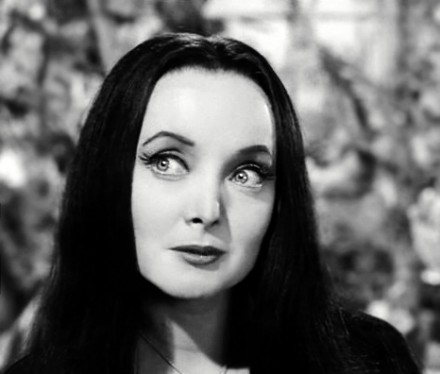
Morticia Addams
While many might consider the prevalence of vampire television to be a modern development, the vampire has been a regular feature of Gothic TV since the 1960s. 1964 saw the launch of The Munsters (CBS 1964-66) and The Addams Family (ABC 1964-66), supernatural-family sitcoms, that featured vampiric matriarchs Lily Munster and Morticia Addams, both of whom possess the vampire’s smouldering sexuality alongside a mother’s nurturing qualities. The Addams Family also featured Grandpa, an aging Dracula iconically portrayed by Al Lewis who later played a similarly lovable vampire in the New Zealand horror film My Grandpa is a Vampire (David Blyth 1992). His vampire is decidedly more comic than frightening. In 1967, the American gothic soap opera, Dark Shadows (ABC 1966-1971) introduced a vampire, Barnabas Collins, to improve its flagging ratings. The original plan was to feature the vampire for a few weeks before putting a stake through his heart, but the producers were met by an unexpected phenomenon: Barnabas Collins began to get fan mail. Fans saw a tragic quality in Barnabas and the writers responded by writing an element of self-loathing into his character which subsequently fuelled his desire for a cure to his vampiric curse. As a result, the reluctant vampire as we know it today was born (see Milly Williamson for a detailed discussion of the sympathetic and reluctant vampire in literature, film and television in ).
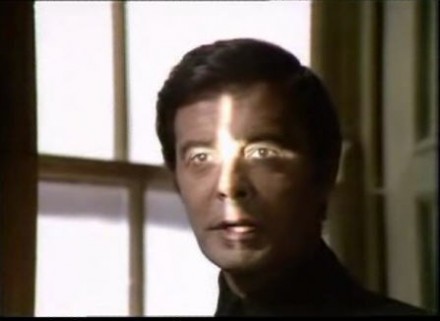
Louis Jourdan as Dracula
While the reluctant vampire was enjoying great success on Dark Shadows, less reluctant vampires were also appearing on television screens primarily in the form of Dracula and his brides. In 1968, the British anthology series Mystery and Imagination (ITV 1966-1970) provided a youthful and modern Dracula played by Denholm Elliot, who brings out a startling independence in the women he vampirises, causing them to denounce and abandon their traditional station in society and take their place by his side. This is a decision Mina makes of her own volition and with great enthusiasm, as it seems to provide an escape from a loveless marriage and opportunity for sexual liberation. British television returned to Dracula with Philip Saville’s celebrated BBC adaptation, Count Dracula (1977), which starred Louis Jourdan as a Machiavellian monster, calm and calculating in his corruption of Britain. The stillness of Jourdan’s performance lends Dracula an unsettling sinister quality which stands in stark contrast to Jack Palance’s earlier, more brutal portrayal of the Count in the 1974 TV movie, directed by Dark Shadows producer and horror auteur Dan Curtis. His Dracula is violent and animalistic, presented as a medieval warlord, capable of great physical violence, while Jourdan is the image of a modern man of war.
Influenced by his work on Dark Shadows, Curtis, working with horror writer Richard Matheson, integrated a tragic love story into the adaptation of Stoker’s novel, in which Lucy Westenra appears to be the reincarnation of the vampire’s lost love (this is a trope that Francis Ford Coppola returned to in his 1992 film Bram Stoker’s Dracula). While this narrative does humanise the vampire somewhat, making him comparatively more sympathetic than other screen Draculas, haunted as he is by a recurring musical love theme whenever he sees or thinks about his human past, it also makes his fight to maintain that which he thinks belongs to him, all the more ferocious. He is a nasty Dracula. At a time when cinematic versions of Dracula, such as Hammer Studios’ Dracula AD 1972 (Alan Gibson 1972) and The Satanic Rites of Dracula (Alan Gibson 1973), were becoming increasingly anachronistic alongside modern horror films, or even parodic, such as Blood for Dracula (Paul Morrissey 1974) and Love at First Bite (Stan Dragoti 1979), Dracula on TV remained sinister and frightening (see Gregory A. Waller for a detailed discussion of the anachronism of the aristocratic vampire within the modern world as portrayed in 1970s cinema).
Despite Dracula’s nastiness and complexity in these adaptations, the presence of the vampire on television and in the home raises questions about the seeming domestication of the monster, causing him or her to lose their monstrous identity because of censorship restrictions that have historically been an inherent part of the television landscape – although the regular blood splatter in True Blood, Being Human and From Dusk Till Dawn (Netflix 2014) stands as evidence that this is changing. The vampires in the aforementioned children’s series don’t drink blood, but are often either vegetarians or channel their obsessive behaviour into their love of counting. Lily Munster and Morticia Addams use their vampiric appearance to highlight sexuality over monstrosity –a decision that was a transgressive re-imagining of the American sitcom of the period as it showcased, not the domestication of the vampire, but the sexualisation of the TV Mom. Serial vampire dramas, beginning with Dark Shadows but continuing through Forever Knight (CBS 1989-1996), Angel, Being Human, Vampire Diaries and True Blood furthered the development of the reluctant vampire, a figure who seeks to deny its vampire identity in favour of a desire to live a human-like life. Often this reluctance is encouraged by a romantic love affair with a human woman, introducing a Romeo and Juliet style narrative to the Gothic story, or as Giles points out to Angel in Buffy the Vampire Slayer, ‘a vampire in love with a slayer. It’s rather poetic – in a maudlin sort of way’ (‘Out of Mind, Out of Sight’ 1.11). Being Human (UK) replaces the heterosexual love affair between vampire and human with a bromance – a powerful friendship between vampire Mitchell and werewolf George that similarly serves to humanise the vampire.
The perception that reluctance is equated with domestication, however, ignores a key televisual aspect that distinguishes these series from their cinema screen brethren, which is seriality. Reluctance does make our attraction to these characters, whether Barnabas Collins, Angel, Mitchell, Bill Compton (True Blood), or Stefan Salvatore (Vampire Diaries), more comfortable as they struggle to control their physical needs, an attempt that makes them noble. The seriality and suspense of each series, however, is built around the potential that they will give in to their blood lust – which each of them do at some point. Their inevitable downfall makes their crimes all the more horrific and disturbing. Angelus threatens and murders Buffy’s friends on Buffy the Vampire Slayer, Stefan reveals a tendency to rip off the heads of his victims in Vampire Diaries and Mitchell, in a fit of revenge and sexual fervour, slaughters all the passengers in a train carriage in Being Human. These are not the actions of a domesticated monster but a creature that has been restrained for too long. Their fall from grace is not a sign of their failure to be human, but more that they are all too human and therefore susceptible to the human weaknesses, jealousy, greed, and revenge, which fuel their monstrosity.
Furthermore, it is important not to confuse the reluctant vampire with the sympathetic vampire, two terms that are often treated as interchangeable. Barnabas, Angel, Spike and Stefan are reluctant, fuelled by self-loathing and a desire for a cure and redemption. This reluctance has led to audience sympathy for these characters. Many TV vampires are, however, sympathetic without being reluctant, embracing their vampirism and urging audiences to negotiate a tightrope walk between attraction and repulsion, often forcing audiences to question their sympathies. Damon Salvatore on The Vampire Diaries, a character who has a substantial fan following, repeatedly reminds his brother Stefan and their many friends that vampires must drink human blood from the vein – rather than the animal blood that Stefan drinks or the blood bank blood bags that vampires Caroline and Elena choose. Damon does at times exhibit reluctance when his vampire nature impedes his romantic relationship with the more reluctant Elena but despite these misgivings, the character is repeatedly demonstrated giving in to his darker nature and wallowing in the kill. Henry on the Canadian vampire series Bloodties (Chum Television 2006-2008), demonstrates no such misgivings, enjoying his vampire nature, hypnotising his victims into feeding his blood lust ‘voluntarily’ and resisting the urge to kill not out of a sense of morality but necessity: a series of unexplained murders would call attention to his activities and put him at risk, a danger that all modern vampires must face.
Furthermore, the trope of the reluctant vampire seems to be primarily reserved for male vampires while female vampires are repeatedly presented as embracing and celebrating their vampirism as a form of empowerment. Whether presented as the villains of the series or more peripheral characters within an ensemble cast, these women’s vampiric nature allows them to challenge their perceived role in society. As Barbara Creed argues, ‘the female vampire is monstrous – and also attractive – precisely because she does threaten to undermine the formal and highly symbolic relations of men and women essential to the continuation of patriarchal society’ (61). For instance, Darla and Drusilla from Buffy and Angel are fuelled by more than a blood lust but rather a taste for violence and mayhem with hints of sadomasochism. They both wallow in social disruption and undermine gender and class expectations. These women invite audience sympathy not despite their vampiric nature but precisely because this nature enables them to resist conforming to societal pressure and be controlled by male vampires like Angel and Spike, or patriarchal human institutions like evil lawfirm Wolfram & Hart , all of whom seek to, at best, protect them, and, at worst, contain them. Similarly, for Pam and Jessica (True Blood), being a vampire offers a welcome release from social convention and patriarchal pressures as Pam abandoned her life as a prostitute subject to the sexual whims of men to live as an immortal lesbian vampire, while Jessica escaped a dominating father and religiously restrictive upbringing. Caroline from The Vampire Diaries is the only one who exhibits elements of the reluctant vampire, refusing to kill for blood. In contrast to her male brethren, however, Caroline displays no self-loathing but rather prefers the strong woman she has become as a vampire to the petty girl she was as a human – in fact refusing a cure when the opportunity presented itself. Significantly, the serial nature of television allows these female vampires to escape the limited representations that they often receive in some vampire films such as Bram Stoker’s Dracula, Van Helsing (Stephen Sommers 2004), and Lesbian Vampire Killers (Phil Claydon 2009).
Vampires have, therefore, not been defanged by television; on the contrary, inviting the vampire to cross the threshold into our homes implicates the audience in their emotionally complicated and morally ambiguous world.

A shorter version of this article was printed in Gothic: The Dark Heart of Film – A BFI Compendium, edited by James Bell. London: British Film Institute 2013. Thank you to the British Film Institute for providing permission to publish the longer version with Offscreen.
Bibliography
Creed, Barbara. (1993) The Monstrous-Feminine: Film, Fesminism, Psychoanalysis. London and New York: Routledge.
Waller, Gregory A. (2010) The Living and the Undead: Slaying Vampires, Exterminating Zombies. Urbana, Chicago and Springfield: University of Illinois Press.
Williamson, Milly (2005) The Lure of the Vampire: Gender, Fiction and Fandom from Bram Stoker to Buffy. London and New York: Wallflower Press.
Photo Source: The featured image is from the Collinsport Society.




